Bloodborne Pathogens: Standard Precautions Vs. Universal Precautions
When talking about "guidelines" and "protocols", what do I mean? Well, bloodborne pathogen compliance starts with two terms: Universal Precautions and Standard Precautions. Let’s take a look at the differences.
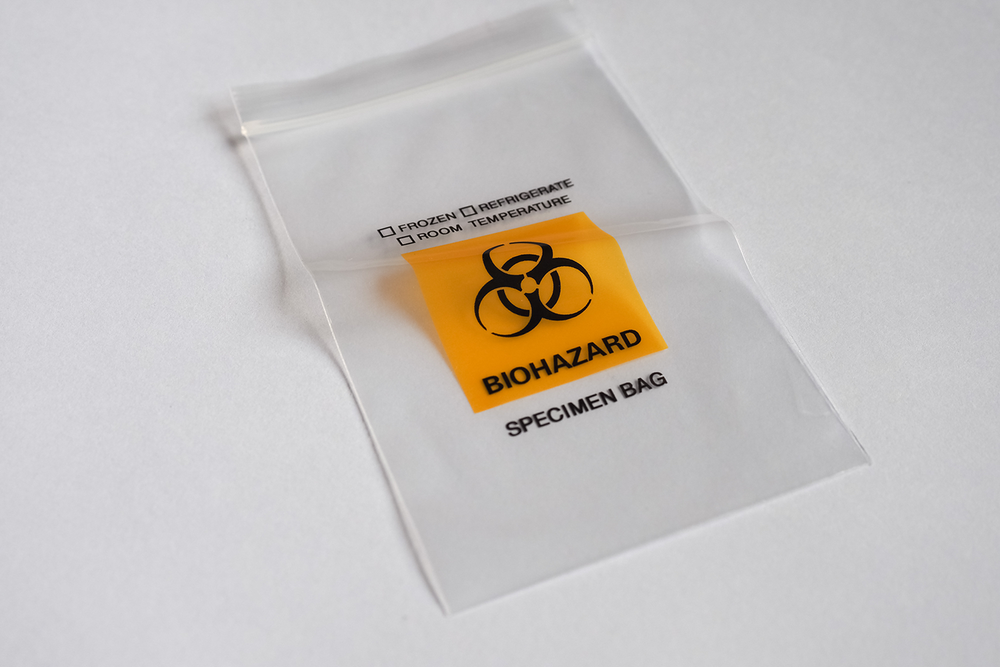
In 2016, OSHA fined the U.S. Postal Service (USPS) over $342,000 for the improper handling of workers’ exposure to bloodborne pathogens.
OSHA launched its investigation in May of that year after receiving a complaint from a USPS employee. The employee alleged exposure to blood and other bodily fluids while handling packages labeled as containing biological infectious materials.
There are two big takeaways that we can pull from that story. First, OSHA’s Bloodborne Pathogen Standard requirements extend beyond the healthcare space. Second, violations of that standard lead to serious ramifications.
Yet, the main point that I’m trying to make is that you need to ensure that you fully understand the requirements associated with OSHA’s Bloodborne Pathogen Standard. I imagine that paying a six-figure fine is the last thing you want to do.

If you’re starting to get nervous while reading this, ask yourself the following questions…
- Is your infection control program taking all the precautions to protect your workers from exposure to bloodborne pathogens?
- Are these processes available to ensure safety when a member of your team sustains an injury? Either from “sharps” or when coming into contact with infected bodily fluid?
If you answer “no” to either of these or are simply unsure, you should probably keep reading.
After all, lawsuits can come down to something as simple as whether a facility follows OSHA’s precautions or not.
During its investigation, OSHA often looks at the facility’s policies and guidelines at the time of the alleged malpractice. Thus, it’s more likely to favor a facility that implements up-to-date protocol to protect staff. Not to mention, having up-to-date guidelines is the best prevention for a liability claim. So hopefully you can stay out of the courtroom altogether!
When talking about "guidelines" and "protocols", what do I mean? Well, bloodborne pathogen compliance starts with two terms: Universal Precautions and Standard Precautions. Let’s take a look at the differences.
Why Do We Need Precautions?
Remember the days when you were a kid? Seems like forever ago, but join me on this reminiscent journey.
You woke up before school not feeling great. Runny nose, cough, congestion… the whole 9 yards. Just to find out you have a fever of 101.4 and you have to stay home to rest.
Pros: You get to miss that history test you have been dreading for a week. You also get to eat your favorite chicken noodle soup and watch cartoons all day.
Cons: You feel awful and don’t even want to eat the soup. Not to mention, your body forces you to sleep for most of the day and you miss your shows.
While most germs can be helpful, we all know some can be harmful too. According to the Agency for Healthcare Research and Quality, less than 1% of bacteria are actually harmful. But that small percentage could mean the difference between life and death.
Many of these deaths are a direct result of bloodborne pathogens. I’m not trying to be morbid, but the fact of the matter is that bloodborne pathogens cause some of the most debilitating diseases on Earth. Not to mention some of which have no cure.
According to the CDC, bloodborne pathogens cause some of the most nefarious diseases such as…
- HIV/AIDs
- Hepatitis B
- Hepatitis C
Those three diseases alone caused almost 2 million deaths in 2019 alone…
With numbers like that, you can start to see why OSHA established the Bloodborne Pathogen Standard.
Anyway, an occupational hazard that might directly result from bloodborne pathogens is Healthcare-associated infections (HAIs) through needle sticks. HAIs are illnesses that patients and staff can contract within a healthcare setting. Roughly 3% of hospital occupants report experiencing at least one HAI a day.
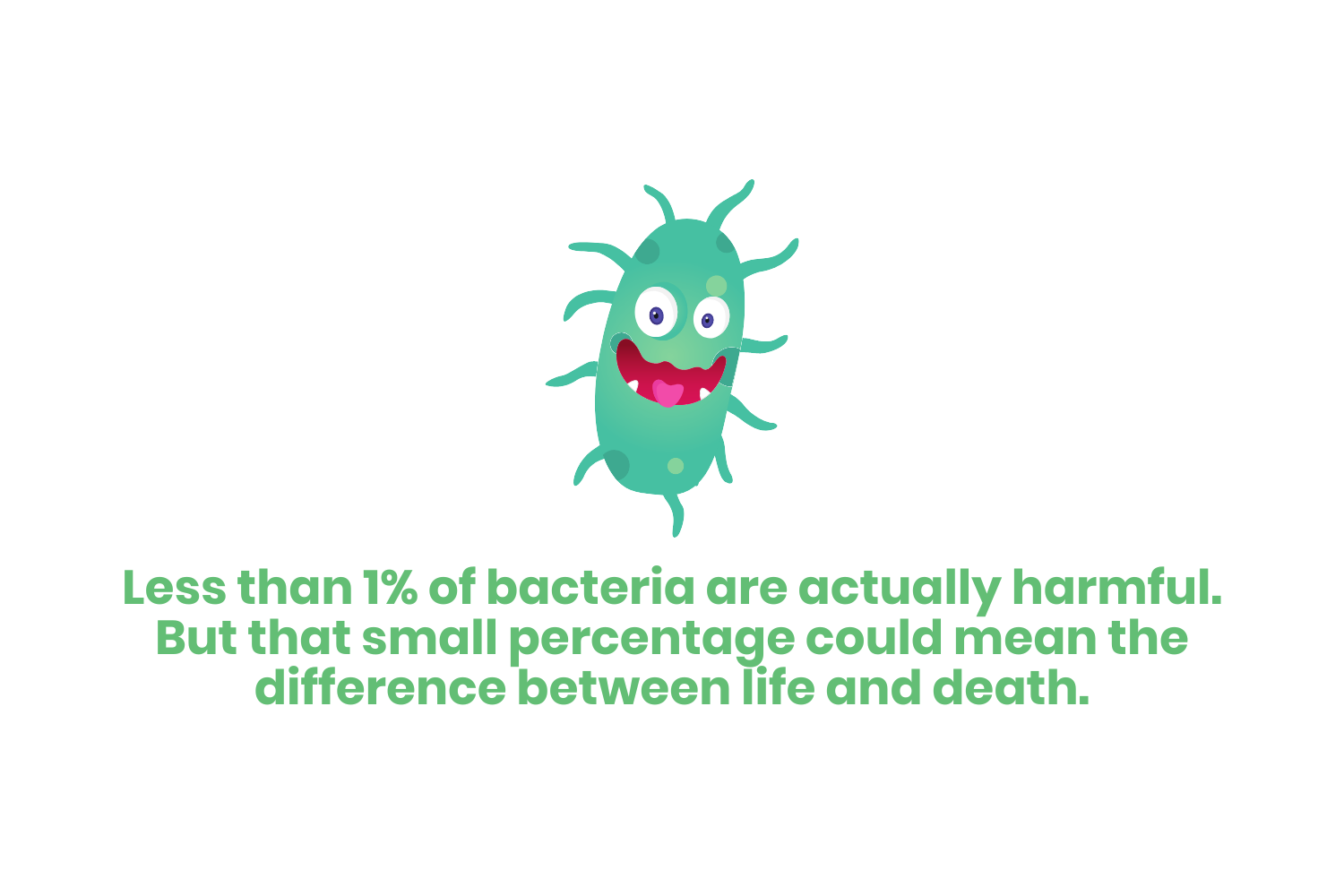
Having policies in place is important to not only help workers who come into contact with these pathogens but prevent community spread as well.
This section was a long way of saying that precautions are a necessary first step in the prevention of bloodborne pathogens.
Universal Precautions
In 1987, The CDC introduced the Recommendations for Prevention of HIV in Health-Care Settings. This document began as a movement in the medical field to not only use precautions with patients with known bloodborne illnesses, but those with unknown infection statuses as well.
Universal precautions protected staff from blood and body fluids. They were the direct response to the human immunodeficiency virus (HIV) epidemic.
According to these guidelines, the blood and body fluids of all persons are infectious until proven otherwise. It wasn’t long until other occupations adopted this practice.
To protect workers who are in contact with these pathogens, wearing gloves and face shields is vital as well as frequent handwashing. Workers must also make sure to avoid exposure to needles and other sharp instruments when the potential for contact with blood or body fluid is possible.
The concept of personal protective equipment (PPE) during this time grew to include a wider variety of equipment. Protective gear such as plastic aprons and other covers became PPE staples to keep body fluids off of hair, skin, clothes, and mucous membranes.
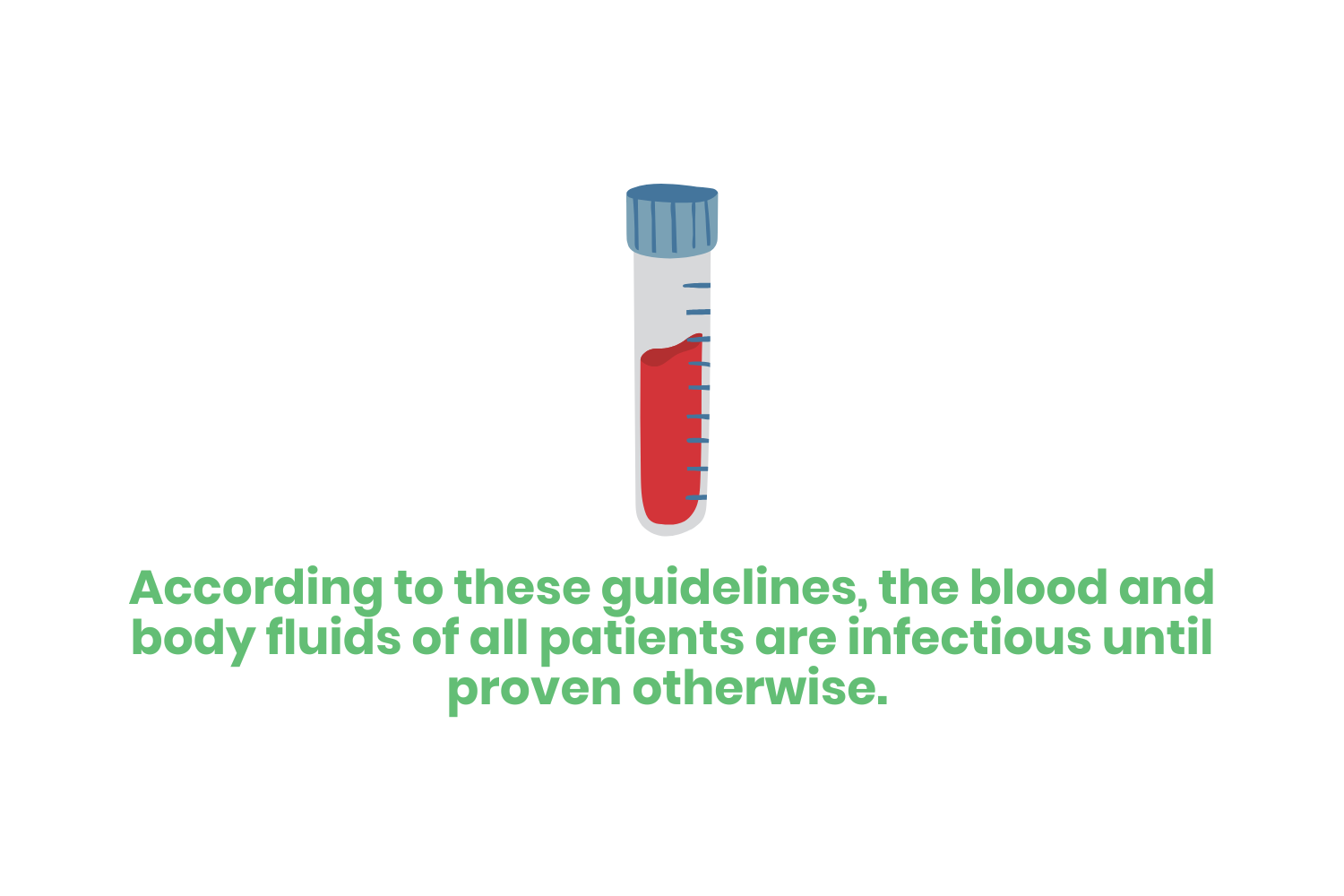
Universal precautions apply to the following substances:
- Blood
- body fluids containing visible blood
- semen and vaginal secretions
- Bodily tissues
- Cerebrospinal fluid (CSF)
- Synovial fluid
- Pleural fluid
- Peritoneal fluid
- Pericardial fluid
- Amniotic fluid
Universal precautions do not apply to:
- Feces
- Nasal secretions
- Sputum
- Sweat
- Tears
- Urine
- Vomit (unless they contain blood)
Along with protective barriers and hand hygiene, Universal Precautions focus on waste management. These policies concerning waste get determined by state and local regulations. Policies should include defining, collecting, storing, decontaminating, and disposing of waste.
But even with these precautions and policies in place, there was still a threat that was not addressed: airborne pathogens.
Standard Precautions
In 1996, the CDC expanded on the idea of Universal Precautions by publishing the CDC Guideline for Isolation Precautions in Hospitals.
This set of regulations, prepared by the Healthcare Infection Control Practices Advisory Committee (HICPAC), drew from the major features of Universal Precaution to create today’s Standard Precautions.
Not only did they take a chapter from existing Universal Precautions, but from Body Substance Isolation standards too. Body Substance Isolation refers to additional safeguards set in place, along with Universal Precautions, to reduce the risk of transmission of pathogens from body fluids.
With these expanded safety measures, employers not only offer protection from bloodborne pathogens but airborne pathogens as well. Regardless of an individual’s infection status, under these rules workers must take the necessary precautions while exposed to pathogens.
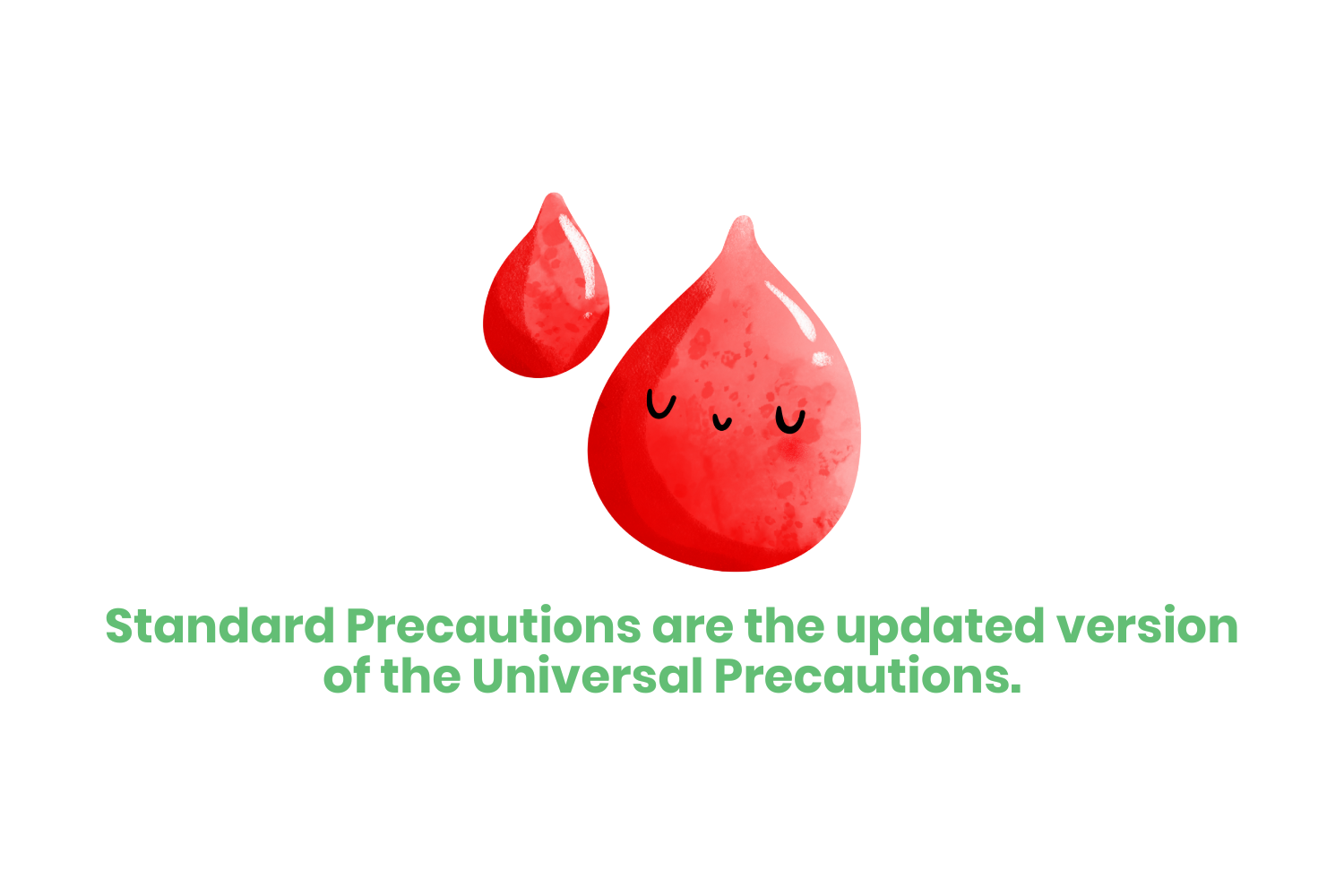
Blood as well as any and all bodily fluids, secretions, and excretions are all considered infectious material.
Since Universal Precautions were a main line of defense against bloodborne diseases, the world has seen devastating new illnesses that gloves cannot protect against alone. Public health officials must take preparations against all avenues of transmission.
Standard Precautions are the minimum guidelines applied to all bodily fluid exposure, regardless of known infection status.
These include:
- Hand Hygiene
- Personal Protective Equipment
- Respiratory Hygiene
- Sharps Safety
- Safe Injection Practices
- Sterilize instruments and devices
- Clean and disinfect environmental surfaces
In other words, Standard Precautions are the updated version of the Universal Precautions.
Transmission-Based Precautions
When Standard Precautions alone cannot prevent transmission, they’re then supplemented with further methods of prevention.
These methods are Transmission-Based Precautions.
This second tier of infection prevention comes into play when someone has a disease that can spread through contact, droplet, or airborne routes.
These are always used in addition to standard precautions, never alone.
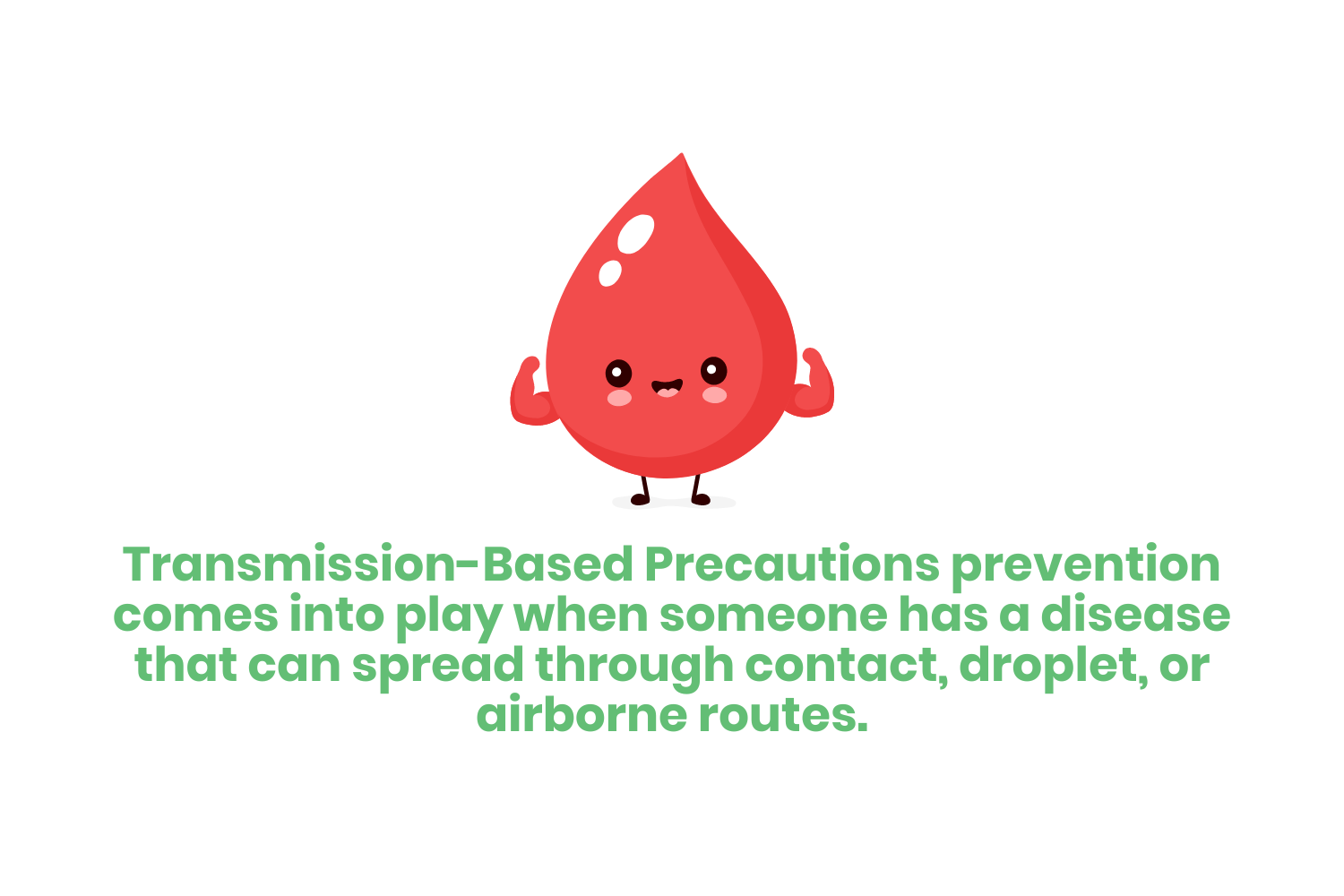
Contact Precautions
Workers use contact precautions in addition to standard precautions when exposed to pathogens that spread through direct contact. These workers must wear specified PPE when in contact with the substance, surfaces, or objects within the environment.
They must also clean and disinfect all reusable items before removing them, as well as dispose of any single-use items in hazardous waste containers.
Droplet Precautions
Workers use these precautions in addition to standard precautions when exposed to pathogens that spread by droplets. Droplets can spread through coughing, sneezing, or even talking/laughing.
Workers must wear a surgical mask within 3 feet of the infected individual. Examples of these infections include influenza, pertussis, and meningococcal disease.
Airborne Precautions
Workers add-in airborne precautions when in contact with individuals who have diseases spread by fine particles in the air. Workers must wear an N-95 respirator (if available) before entry into a contaminated area.
Anyone working with a contaminated individual must wear their N-95 for the entire time they are in contact with them. Do not take off the mask until you are out of the room. Remove and discard the mask once you are out of the contaminated area.
Conclusion
After reading this blog post, google the phrase, “bloodborne pathogen violations” and go to the news section. You’ll quickly see thousands of stories that cover OSHA Bloodborne Pathogen Standards violations on companies of all industries. Not good.
Standard Precautions and Universal Precautions are both safety concepts that heavily overlap. However, the terms aren’t interchangeable. Universal Precautions address guidelines for all patients, regardless of suspicion of infection, to prevent bloodborne disease.
Standard Precautions are the evolution of these guidelines to consider the spread of airborne pathogens as well as in situations where workers are in contact with any form of body fluid.
In addition to these standards, Transmission-Based Precautions are more specific in terms of handling certain types of infections. It is important to understand these terms and how they relate to your work environment to avoid any legal ramifications.
Making sure your team is up to date with the latest OSHA policies and precautions is one of the most important steps to preventing a hefty fine.
Emphasize your product's unique features or benefits to differentiate it from competitors
In nec dictum adipiscing pharetra enim etiam scelerisque dolor purus ipsum egestas cursus vulputate arcu egestas ut eu sed mollis consectetur mattis pharetra curabitur et maecenas in mattis fames consectetur ipsum quis risus mauris aliquam ornare nisl purus at ipsum nulla accumsan consectetur vestibulum suspendisse aliquam condimentum scelerisque lacinia pellentesque vestibulum condimentum turpis ligula pharetra dictum sapien facilisis sapien at sagittis et cursus congue.
- Pharetra curabitur et maecenas in mattis fames consectetur ipsum quis risus.
- Justo urna nisi auctor consequat consectetur dolor lectus blandit.
- Eget egestas volutpat lacinia vestibulum vitae mattis hendrerit.
- Ornare elit odio tellus orci bibendum dictum id sem congue enim amet diam.
Incorporate statistics or specific numbers to highlight the effectiveness or popularity of your offering
Convallis pellentesque ullamcorper sapien sed tristique fermentum proin amet quam tincidunt feugiat vitae neque quisque odio ut pellentesque ac mauris eget lectus. Pretium arcu turpis lacus sapien sit at eu sapien duis magna nunc nibh nam non ut nibh ultrices ultrices elementum egestas enim nisl sed cursus pellentesque sit dignissim enim euismod sit et convallis sed pelis viverra quam at nisl sit pharetra enim nisl nec vestibulum posuere in volutpat sed blandit neque risus.

Use time-sensitive language to encourage immediate action, such as "Limited Time Offer
Feugiat vitae neque quisque odio ut pellentesque ac mauris eget lectus. Pretium arcu turpis lacus sapien sit at eu sapien duis magna nunc nibh nam non ut nibh ultrices ultrices elementum egestas enim nisl sed cursus pellentesque sit dignissim enim euismod sit et convallis sed pelis viverra quam at nisl sit pharetra enim nisl nec vestibulum posuere in volutpat sed blandit neque risus.
- Pharetra curabitur et maecenas in mattis fames consectetur ipsum quis risus.
- Justo urna nisi auctor consequat consectetur dolor lectus blandit.
- Eget egestas volutpat lacinia vestibulum vitae mattis hendrerit.
- Ornare elit odio tellus orci bibendum dictum id sem congue enim amet diam.
Address customer pain points directly by showing how your product solves their problems
Feugiat vitae neque quisque odio ut pellentesque ac mauris eget lectus. Pretium arcu turpis lacus sapien sit at eu sapien duis magna nunc nibh nam non ut nibh ultrices ultrices elementum egestas enim nisl sed cursus pellentesque sit dignissim enim euismod sit et convallis sed pelis viverra quam at nisl sit pharetra enim nisl nec vestibulum posuere in volutpat sed blandit neque risus.
Vel etiam vel amet aenean eget in habitasse nunc duis tellus sem turpis risus aliquam ac volutpat tellus eu faucibus ullamcorper.
Tailor titles to your ideal customer segment using phrases like "Designed for Busy Professionals
Sed pretium id nibh id sit felis vitae volutpat volutpat adipiscing at sodales neque lectus mi phasellus commodo at elit suspendisse ornare faucibus lectus purus viverra in nec aliquet commodo et sed sed nisi tempor mi pellentesque arcu viverra pretium duis enim vulputate dignissim etiam ultrices vitae neque urna proin nibh diam turpis augue lacus.


![[ANSWERED] Is Zelle HIPAA Compliant?](https://cdn.prod.website-files.com/67e2b8210878abcba6f91ae6/68ad098bff78a96fcbd12339_IsZelleHIPAACompliant_224.webp)
![[ANSWERED] Do HIPAA Laws Apply to Employers?](https://cdn.prod.website-files.com/67e2b8210878abcba6f91ae6/68acfaf1f65a5c2c5d2c3a21_DoHIPAALawsExamples_1123.webp)
